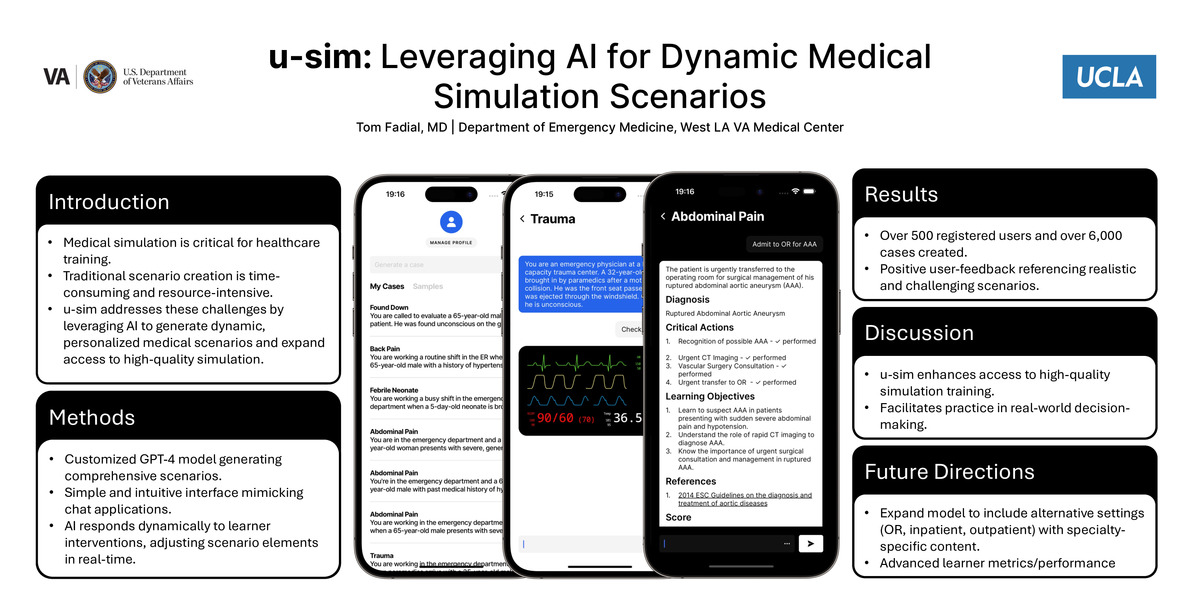
-
Author
Tom Fadial -
Poster Title
u-sim: on-demand medical simulation using artificial intelligence
-
Author(s)
Tom Fadial, MD
Department of Emergency Medicine
West LA VA Medical Center
-
Contact Author Email
tom@fadial.com
-
Poster Abstract
u-sim is a web and mobile application leveraging AI to support the rapid creation of dynamic medical simulation scenarios based on topics provided by learners. u-sim was created to expand access to high-quality medical simulation which is otherwise a time- and resource-intensive process.
When a learner requests a scenario, u-sim uses OpenAI’s GPT-4 model to generate a comprehensive scenario including a case presentation, background history, diagnostic test results and educational objectives (including critical actions and learning points). The application then presents a brief case stem that prompts interaction from the learner. Learners may request any additional information to help make the diagnosis as well as interventions. The scenario responds dynamically to learner interventions (for example, adjusting vital signs in response to the learner orders).
The scenario concludes when a learner provides a diagnosis after which they are provided with a case summary including performance metrics and references.
The application’s simple design focuses learners on the active case and provides a simple but powerful interface - text input. Modern learners will be immediately familiar with the interface which closely mimics a chat application. This is further simplified with a “quick orders” interface for common inputs like “Get vital signs” or “Bolus 1L IV fluids”.
u-sim’s unique model adjustments, system prompts and use of advanced AI features like “function calls” ensure reliable responses and model integrity, helping to avoid feared “'hallucinations” and presenting specialized data in a custom interface (for example, an animated vital signs monitor for rendering up-to-date measurements).
u-sim has gathered more than 400 registered users with over 5,000 cases completed.
-
Keywords
Simulation, Medical Education, Artificial Intelligence
-
Poster PDF

